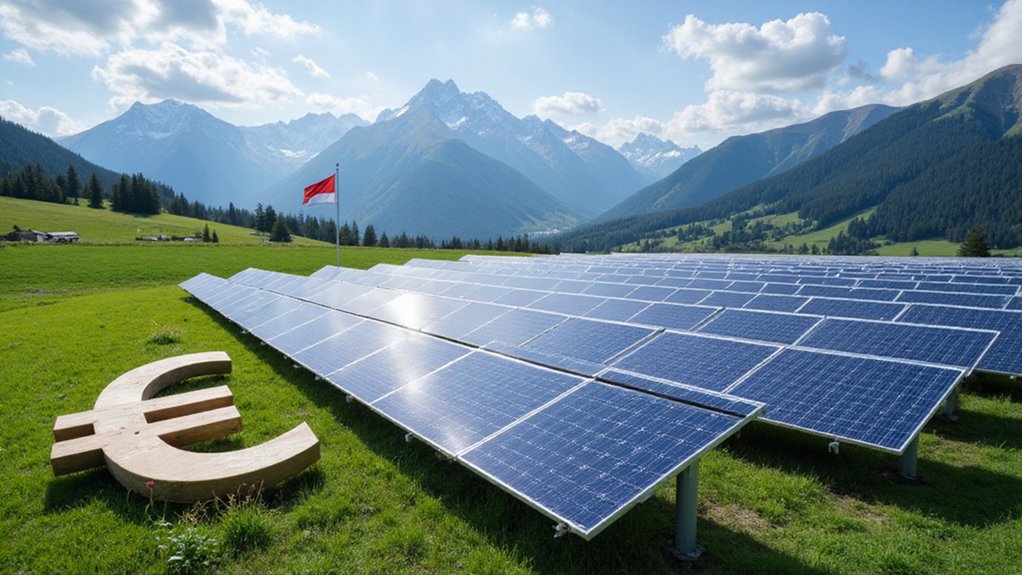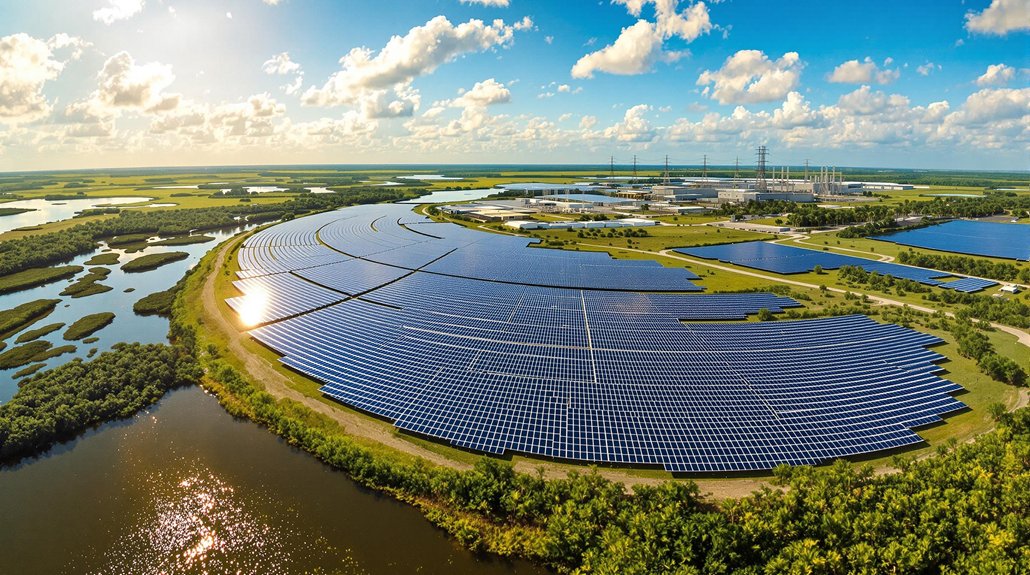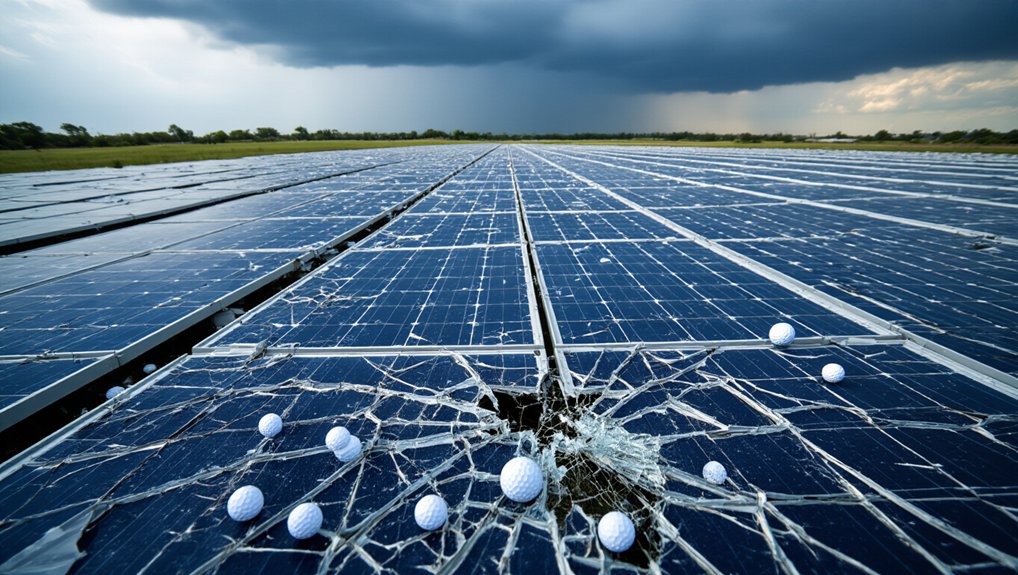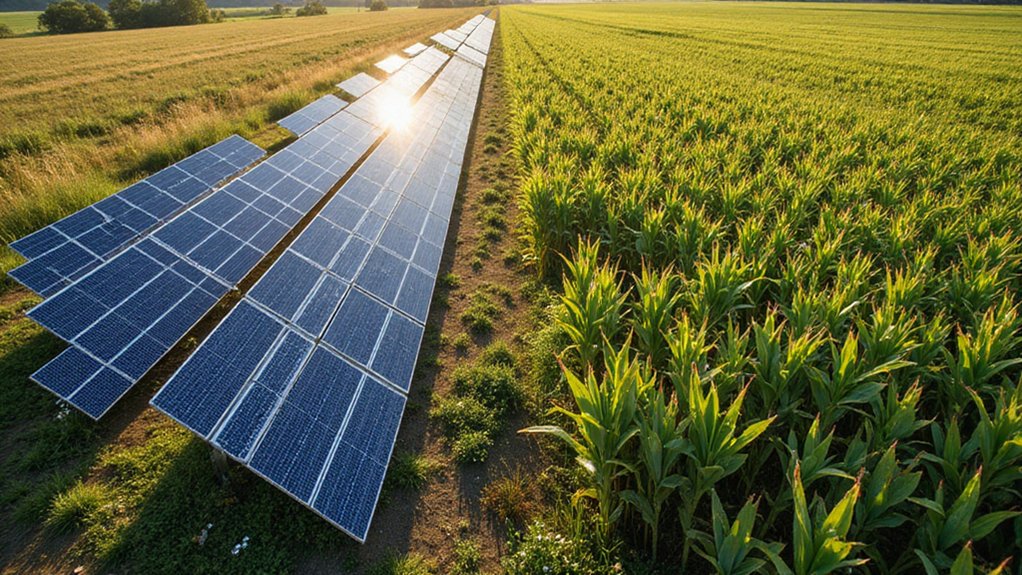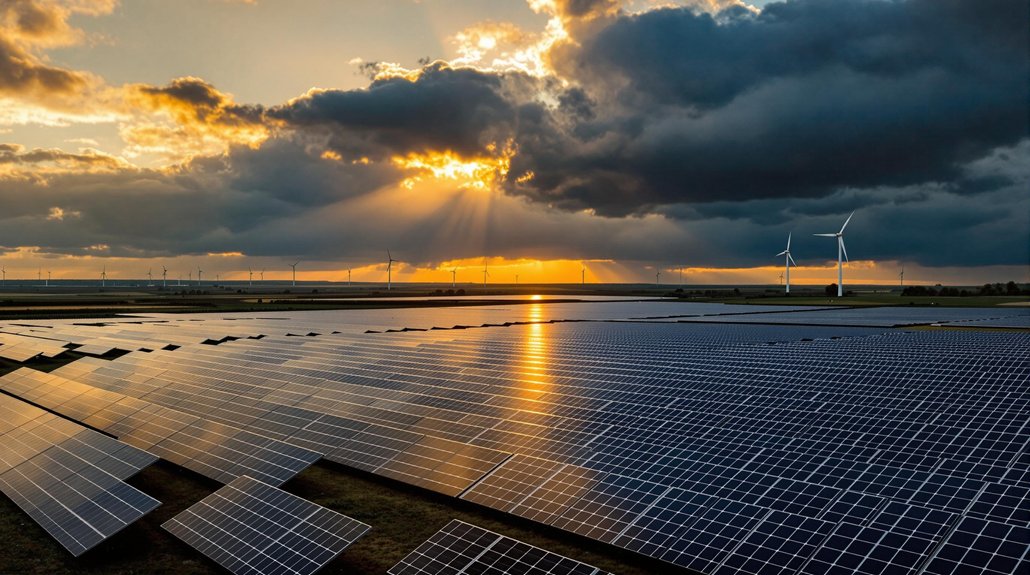European solar projects are witnessing substantial funding increases despite installation growth plummeting from 53% to 4%. The EU has committed €118 billion for climate action, with €4.6 billion earmarked specifically for solar—about 45% of the renewables budget. Spain leads with €2.8 billion in funding, while countries like Sweden receive merely pocket change. The financing mechanism launched in 2020 is showing promise, but Europe’s solar ambitions need more than just money to shine.
While the European Union continues to pour billions into photovoltaic projects across the continent, the funding landscape reveals both promising investments and concerning trends. The EU has committed a staggering €118 billion to climate action and renewables through cohesion funds for 2021-2027. Solar gets the lion’s share – €4.6 billion, which is about 45% of the renewables pie. Not too shabby.
Spain is living it up as the golden child of EU renewable funding, pocketing nearly €2.8 billion. Poland follows with a cool €2 billion, while Italy snags €970 million. And then there’s Sweden, Luxembourg, and Malta – the forgotten stepchildren with less than €7 million each. Guess not everyone gets invited to the solar party.
The solar funding feast leaves some EU nations feasting lavishly while others scramble for crumbs off the renewable table.
The EU’s renewable energy financing mechanism kicked off in 2020, and it’s already making waves. Their first tender in 2023 doled out €40 million to eight solar PV projects, adding 282.77 MW of capacity. Projects get selected based on the lowest bid price after passing the usual bureaucratic hoops. Luxembourg and Finland were the participating countries in this initial tender, sharing statistics on renewable electricity generation afterward.
You’ve got 24 months to start building after signing, or the money vanishes. Typical EU – generous but demanding.
But here’s where things get weird. Despite installing a record-breaking 66 GW of solar in 2024 (barely beating 2023’s 63 GW), investment is actually slowing down. Growth rate? It nosedived from 53% in 2023 to a pathetic 4% in 2024. That’s a 92% plummet, folks. Market sentiment is tanking faster than a lead balloon.
The EU has bankrolled over a thousand PV projects since inception, contributing more than €3.3 billion. All this aligns with the European Green Deal and climate neutrality goals. Cross-border collaboration, technology transfer, national targets – they’ve got the buzzwords covered. With solar power jobs leading the global renewable energy employment market, Europe is positioning itself to capitalize on this growing workforce sector.
A second tender is planned for 2024, showing the EU’s commitment to keep the solar train rolling. But with investment slumping amid global competition, someone better hit the gas pedal soon. Recent figures show annual investment in solar installations across the EU dropped by 13% to €55 billion in 2024, marking the first decline in solar investment this decade.
References
- https://energy.ec.europa.eu/news/eu-renewable-energy-financing-mechanism-eu40-million-awarded-8-solar-pv-projects-2023-11-14_en
- https://www.solarpowereurope.org/press-releases/new-report-european-solar-sector-issues-yellow-card-as-market-data-reveals-92-growth-decline-and-investment-slump
- https://data.jrc.ec.europa.eu/dataset/85a71b06-ed9e-4cbd-a5dc-a812af38cfb4
- https://www.solarpowereurope.org/insights/outlooks/eu-market-outlook-for-solar-power-2024-2028/detail
- https://www.balcanicaucaso.org/eng/Areas/Europe/Renewable-energy-more-EU-funds-in-the-2021-2027-period-230907
